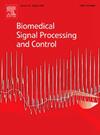Optimized attention Induced multi head convolutional neural network with Densenet201 for cervical cancer diagnosis
IF 4.9
2区 医学
Q1 ENGINEERING, BIOMEDICAL
引用次数: 0
Abstract
Cervical cancer is the fourth most common disease globally, highlighting the importance of early detection for effective treatment. Although the Pap smear test is the gold standard for detecting cervical cancer, its effectiveness depends on the expertise and dedication of the physicians. In this paper, Optimized Attention Induced Multi Head Convolutional Neural Network with Densenet201 for Cervical Cancer Diagnosis (AIMHCNN-Densenet201-CCD) is proposed. Initially, the input images are gathered from SIPaKMeD and Medical Scan Classification Dataset. Then, the input data is pre-processed using Regularized Bias-aware Ensemble Kalman filter (RBEKF) to crop and rotate input images. The pre-processed images are fed to Modified Spline-Kernelled Chirplet Transform (MSKCT) to extract the morphological features such as Shape, Colour, Structure and Size. Afterwards, the extracted features are fed into Multi-Head Convolutional Neural Network with Attention Induced and Densenet201 (AIMHCNN-Densenet201) for diagnosing Cervical Cancer like Dyskeratotic, Metaplastic, Koilocytotic, Parabasal and Superficial-Intermediate. Finally, Dove Swarm Optimization (DSO) is proposed to optimize the weight parameter of AIMHCNN-Densenet201 classifier that precisely diagnoses the Cervical Cancer. The proposed AIMHCNN-Densenet201-CCD method is implemented and analyzed using performance metrics such as accuracy, precision, specificity, f1-score, sensitivity, error rate and computation time. The proposed approach attains 29.82 %, 21.24 %, 18.97 % higher accuracy and 24.75 %, 32.57 %, and 29.69 % higher precision compared with existing methods respectively.
应用Densenet201优化注意诱导多头卷积神经网络用于宫颈癌诊断
宫颈癌是全球第四大常见疾病,这突出了早期发现对有效治疗的重要性。虽然子宫颈抹片检查是检测子宫颈癌的金标准,但其有效性取决于医生的专业知识和奉献精神。本文提出了基于Densenet201的宫颈癌诊断优化注意诱导多头卷积神经网络(AIMHCNN-Densenet201-CCD)。最初,输入的图像是从SIPaKMeD和医学扫描分类数据集收集的。然后,使用正则化偏差感知集成卡尔曼滤波器(RBEKF)对输入数据进行预处理,以裁剪和旋转输入图像。将预处理后的图像送入改进样条核小波变换(MSKCT),提取图像的形状、颜色、结构和大小等形态学特征。然后,将提取的特征输入到具有注意诱导和密度的多头卷积神经网络(AIMHCNN-Densenet201)中,用于诊断角化不良、化生、嗜核、旁基底和表浅-中间等宫颈癌。最后,提出了鸽群算法(DSO)来优化AIMHCNN-Densenet201分类器的权重参数,实现宫颈癌的精确诊断。采用准确度、精密度、特异度、f1评分、灵敏度、错误率和计算时间等性能指标对AIMHCNN-Densenet201-CCD方法进行了实现和分析。与现有方法相比,该方法的精度分别提高了29.82%、21.24%、18.97%,精度分别提高了24.75%、32.57%、29.69%。
本文章由计算机程序翻译,如有差异,请以英文原文为准。
求助全文
约1分钟内获得全文
求助全文
来源期刊

Biomedical Signal Processing and Control
工程技术-工程:生物医学
CiteScore
9.80
自引率
13.70%
发文量
822
审稿时长
4 months
期刊介绍:
Biomedical Signal Processing and Control aims to provide a cross-disciplinary international forum for the interchange of information on research in the measurement and analysis of signals and images in clinical medicine and the biological sciences. Emphasis is placed on contributions dealing with the practical, applications-led research on the use of methods and devices in clinical diagnosis, patient monitoring and management.
Biomedical Signal Processing and Control reflects the main areas in which these methods are being used and developed at the interface of both engineering and clinical science. The scope of the journal is defined to include relevant review papers, technical notes, short communications and letters. Tutorial papers and special issues will also be published.
 求助内容:
求助内容: 应助结果提醒方式:
应助结果提醒方式:


